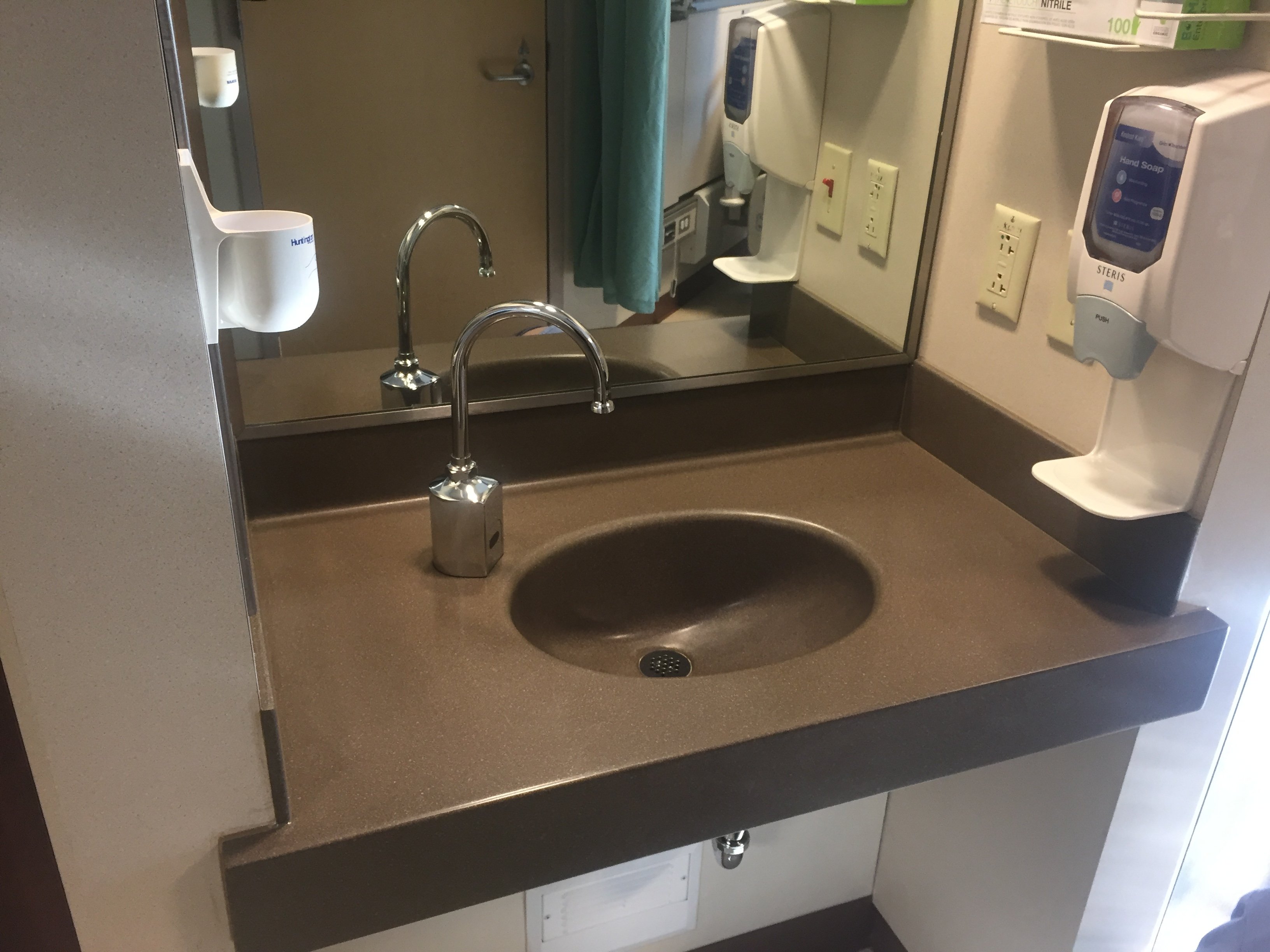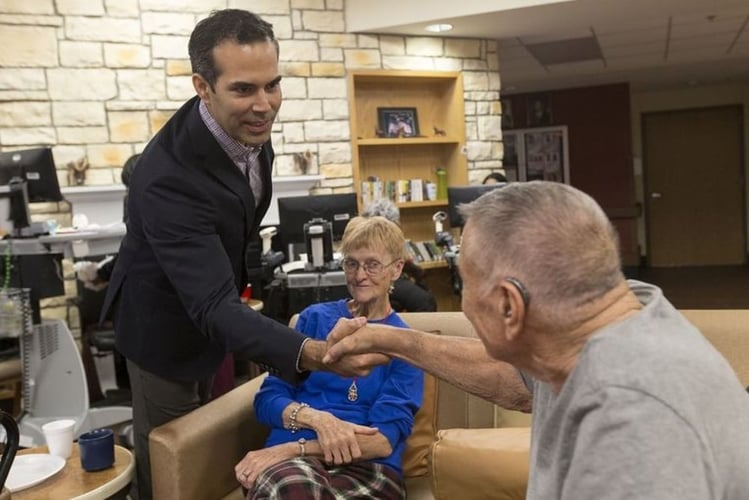Hospital-acquired infections cause thousands deaths each year and result in additional days in the hospital for thousands of patients.
Researchers and physicians at the Central Texas Veterans Health Care System Olin E. Teague Veterans’ Medical Center have partnered with EOS Surfaces and Wilsonart to reduce infections in hospitalized veterans by using copper-infused solid surfacing in patient rooms at the Temple VA.
EOS Surfaces out of Norfolk, Va., donated the material impregnated with copper that will be used to fabricate the hard surfaces in the acute care, medical, surgical and intensive care beds in the VA hospital. The copper-infused product was used in the VA’s new emergency department as well.
Hard surfaces — which can harbor dangerous pathogens — will be replaced with EOScu. By actively and continuously killing 99.9 percent of disease-causing bacteria in under two hours, EOScu could have an impact on the healthcare-acquired infection rate of this hospital, improving care and out- comes for patients.
This project couldn’t have happened without all the groups working together, said Michael Kilmer, director Central Texas Veterans Health Care Services.
“One of the core missions of the VA is research, and to me, this will be successful if it keeps one veteran from having to stay in the hospital longer because of a hospital-acquired infection,” Kilmer said.
The purpose of the project is twofold, said Dr. Chetan Jinadatha, chief of infectious disease. One was to transform the interior of the hospital surfaces, especially the ones that are frequently touched by veterans and patients, to the EOS-manufactured product, and to improve the aesthetics of patient rooms.
At the same time, research will be done looking at the anti-bacterial properties of the product in a real world setting, Jinadatha said. The research will look at how the product affects the rate of hospital-acquired infections and the antimicrobial properties from a scientific perspective.
“It took a lot of work to get here and we had a lot of partners,” he said.
The installation of the new surfaces in the hospital should be complete in March; the research will take place over the next three years.
“Super bugs are a global threat and prevention is the key,” Jinadatha said.
Ken Trinder, CEO of EOS Surfaces, said he wanted to thank Jinadatha for his tenacity, his fervor and his steady attention.
“The guy is unbelievable and he has really made this happen,” Trinder said. “It has been a long haul, we’ve been working at this for two years, but these things that are important take a lot of time.”
Trinder said veterans are of particular interest to him.
EOS is located in Norfolk, where 40 percent of the US Navy’s 232 ships are located, along with 34 aircraft squadrons.
The military is a huge part of the economy and a huge part of the culture, he said.
“For us there’s financial value in the data and there’s humanitarian value,” Trinder said. “For a company it’s personal.”
EOS wants to be a standard of care and the most trusted brand within the hospital acquired infection environmental treatment and prevention market.
The product is impregnated throughout with copper oxide whose ions are attracted to moisture and is devastating to bacterial and viral pathogens.
Human protocols used to prevent HAI have gone about as far as possible, Trinder said.
“It’s difficult to get to zero and we’re doing this because we think we can get there,” he said.
EOS is OK’d by the Environmental Protection Agency to make public health claims that its product has been proven to actively and continuously kill greater than 99.9 percent of disease-causing bacteria including multi-drug resistant organisms.
The study will look at data collected three years prior to the installation of the self-sanitizing surfaces and the three years after the EOS products are in place, said Marjory Williams, associate chief nursing services for the Central Texas Veterans Health Care Services.
Feasibility studies on microbial colony forming activity comparing over-the-bed tables made of EOS and regular surfaces indicated the colonies grew on the regular surfaces and decreased or maintained on the copper infused material.
In 2014, Jinadatha and the VA looked at how successful ultraviolet disinfection system was in ridding patient rooms of harmful bacteria.
The copper-infused material has self-sanitizing properties and can continue to kill microbes without cleaning, Jinadatha said. It will be used in concert with the UV machine that can reach surfaces not regularly cleaned.
The solid surfacing reduces transmission of infection because it’s constantly killing off germs, he said.
![EOScu Logo - Dark - Outlined [07182023]-01](https://blog.eoscu.com/hubfs/Eoscu_June2024/Images/EOScu%20Logo%20-%20Dark%20-%20Outlined%20%5B07182023%5D-01.svg)


 BY JANICE GIBBS | TEMPLE DAILY TELEGRAM
BY JANICE GIBBS | TEMPLE DAILY TELEGRAM


